Kawasaki disease-specific molecules in the sera are linked to microbe-associated molecular patterns in the biofilms
- PMID: 25411968
- PMCID: PMC4239021
- DOI: 10.1371/journal.pone.0113054
Kawasaki disease-specific molecules in the sera are linked to microbe-associated molecular patterns in the biofilms
Abstract
Background: Kawasaki disease (KD) is a systemic vasculitis of unknown etiology. The innate immune system is involved in its pathophysiology at the acute phase. We have recently established a novel murine model of KD coronary arteritis by oral administration of a synthetic microbe-associated molecular pattern (MAMP). On the hypothesis that specific MAMPs exist in KD sera, we have searched them to identify KD-specific molecules and to assess the pathogenesis.
Methods: We performed liquid chromatography-mass spectrometry (LC-MS) analysis of fractionated serum samples from 117 patients with KD and 106 controls. Microbiological and LC-MS evaluation of biofilm samples were also performed.
Results: KD samples elicited proinflammatory cytokine responses from human coronary artery endothelial cells (HCAECs). By LC-MS analysis of KD serum samples collected at 3 different periods, we detected a variety of KD-specific molecules in the lipophilic fractions that showed distinct m/z and MS/MS fragmentation patterns in each cluster. Serum KD-specific molecules showed m/z and MS/MS fragmentation patterns almost identical to those of MAMPs obtained from the biofilms formed in vitro (common MAMPs from Bacillus cereus, Yersinia pseudotuberculosis and Staphylococcus aureus) at the 1st study period, and from the biofilms formed in vivo (common MAMPs from Bacillus cereus, Bacillus subtilis/Bacillus cereus/Yersinia pseudotuberculosis and Staphylococcus aureus) at the 2nd and 3rd periods. The biofilm extracts from Bacillus cereus, Bacillus subtilis, Yersinia pseudotuberculosis and Staphylococcus aureus also induced proinflammatory cytokines by HCAECs. By the experiments with IgG affinity chromatography, some of these serum KD-specific molecules bound to IgG.
Conclusions: We herein conclude that serum KD-specific molecules were mostly derived from biofilms and possessed molecular structures common to MAMPs from Bacillus cereus, Bacillus subtilis, Yersinia pseudotuberculosis and Staphylococcus aureus. Discovery of these KD-specific molecules might offer novel insight into the diagnosis and management of KD as well as its pathogenesis.
Conflict of interest statement
Figures

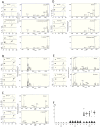
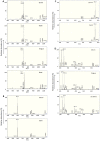
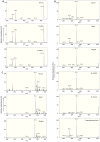
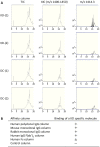

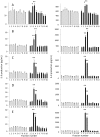
Similar articles
-
Lipidomics links oxidized phosphatidylcholines and coronary arteritis in Kawasaki disease.Cardiovasc Res. 2021 Jan 1;117(1):96-108. doi: 10.1093/cvr/cvz305. Cardiovasc Res. 2021. PMID: 31782770
-
[Kawasaki disease and infection].Nihon Rinsho. 2008 Feb;66(2):278-82. Nihon Rinsho. 2008. PMID: 18260325 Review. Japanese.
-
Semaphorin 7A promotes endothelial permeability and inflammation via plexin C1 and integrin β1 in Kawasaki disease.BMC Pediatr. 2024 Apr 27;24(1):285. doi: 10.1186/s12887-024-04766-3. BMC Pediatr. 2024. PMID: 38678170 Free PMC article.
-
A Novel Truncated Form of Serum Amyloid A in Kawasaki Disease.PLoS One. 2016 Jun 6;11(6):e0157024. doi: 10.1371/journal.pone.0157024. eCollection 2016. PLoS One. 2016. PMID: 27271757 Free PMC article.
-
The pathogenesis of Kawasaki disease and superantigens.Jpn J Infect Dis. 1999 Aug;52(4):141-5. Jpn J Infect Dis. 1999. PMID: 10592892 Review.
Cited by
-
Exploring the Mechanism of Aspirin in the Treatment of Kawasaki Disease Based on Molecular Docking and Molecular Dynamics.Evid Based Complement Alternat Med. 2022 Aug 12;2022:9828518. doi: 10.1155/2022/9828518. eCollection 2022. Evid Based Complement Alternat Med. 2022. PMID: 35990842 Free PMC article.
-
The up-to-date pathophysiology of Kawasaki disease.Clin Transl Immunology. 2021 May 10;10(5):e1284. doi: 10.1002/cti2.1284. eCollection 2021. Clin Transl Immunology. 2021. PMID: 33981434 Free PMC article. Review.
-
Assessment of Pediatric Admissions for Kawasaki Disease or Infectious Disease During the COVID-19 State of Emergency in Japan.JAMA Netw Open. 2021 Apr 1;4(4):e214475. doi: 10.1001/jamanetworkopen.2021.4475. JAMA Netw Open. 2021. PMID: 33822065 Free PMC article.
-
Clarithromycin Plus Intravenous Immunoglobulin Therapy Can Reduce the Relapse Rate of Kawasaki Disease: A Phase 2, Open-Label, Randomized Control Study.J Am Heart Assoc. 2017 Jul 6;6(7):e005370. doi: 10.1161/JAHA.116.005370. J Am Heart Assoc. 2017. PMID: 28684643 Free PMC article. Clinical Trial.
-
Yersinia pseudotuberculosis infection in Kawasaki disease and its clinical characteristics.BMC Pediatr. 2015 Nov 11;15:177. doi: 10.1186/s12887-015-0497-2. BMC Pediatr. 2015. PMID: 26561332 Free PMC article. Clinical Trial.
References
-
- Newburger JW, Takahashi M, Gerber MA, Gewits MH, Tani LY, et al. (2004) Diagnosis, treatment, and long-term management of Kawasaki disease: a statement for health professionals from the Committee on Rheumatic Fever, Endocarditis and Kawasaki Disease, Council on Cardiovascular Disease in the Young, American Heart Association. Circulation 110: 2747–2771. - PubMed
-
- Burns JC (2007) The riddle of Kawasaki disease. N Engl J Med 356: 659–661. - PubMed
-
- Foell D, Ichida F, Vogl T, Yu X, Chen R, et al. (2003) S100A12 (EN-RAGE) in monitoring Kawasaki disease. Lancet 361: 1270–1272. - PubMed
Publication types
MeSH terms
Substances
LinkOut - more resources
Full Text Sources
Other Literature Sources
Medical

